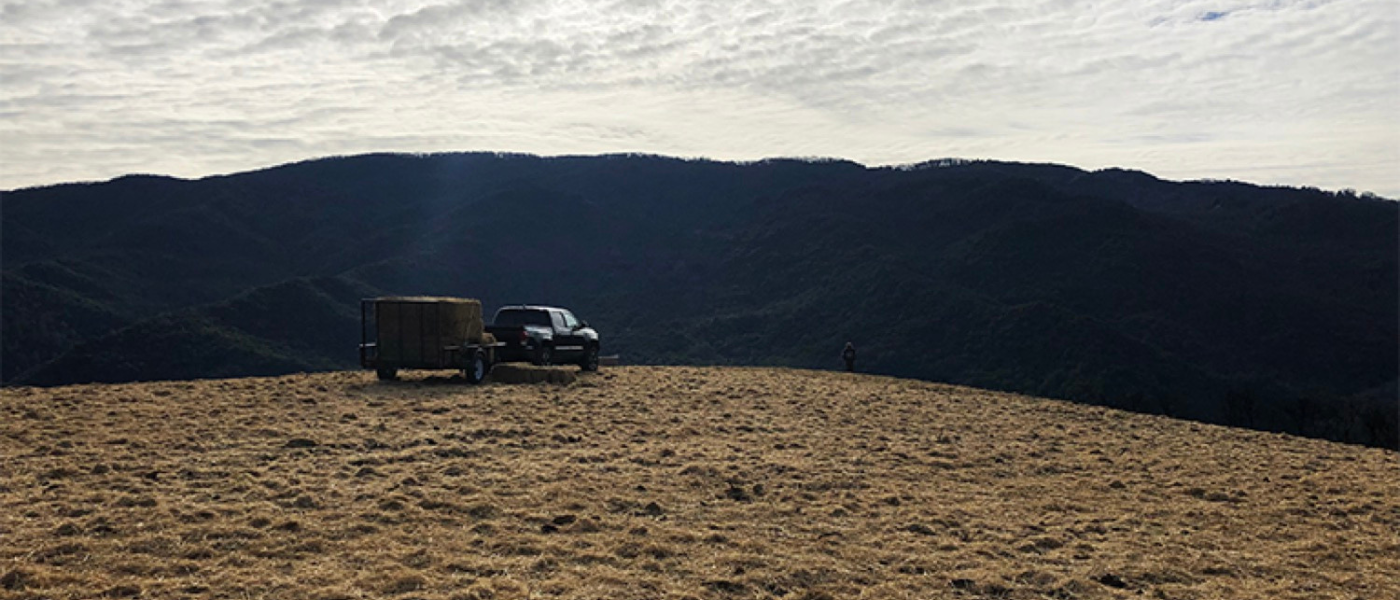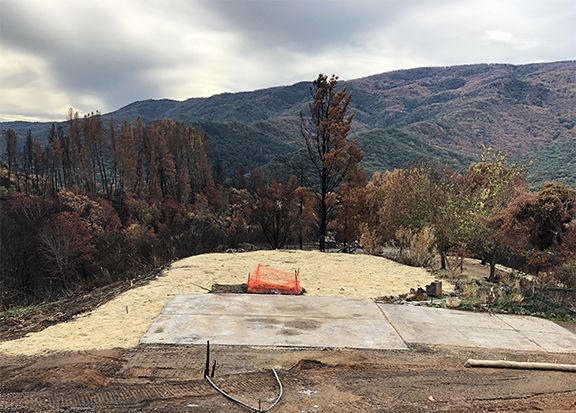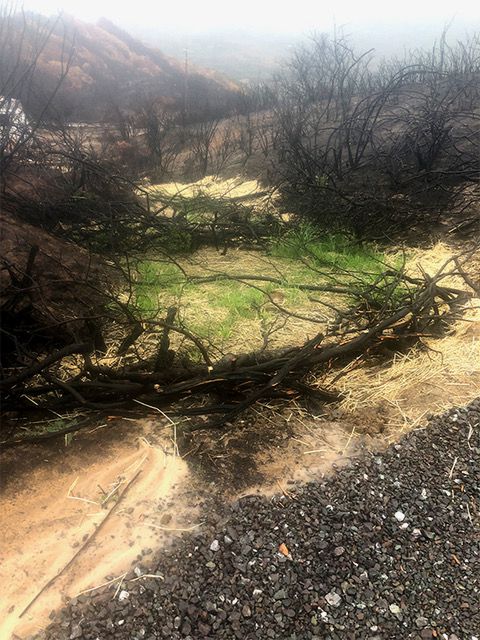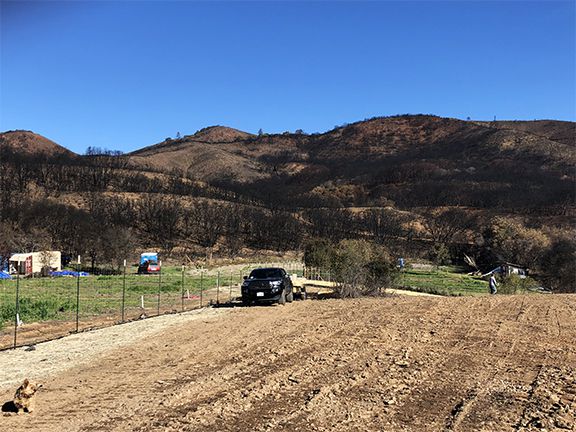
We understand fire hydrology and how to use natural materials like brush, straw, and seed to restore the landscape.

Erosion after a wildfire can be severe, causing damage to the environment and property, as well as contributing to the desolate look of a burned area. After a fire, storm runoff does not infiltrate normally, resulting in rilling, landslides, flooding, and sedimentation. Roads can fail, culverts can plug, and topsoil can be lost. Understanding the science behind this soil loss and applying restoration techniques can prevent roads from failing, support forest regeneration, and reduce soil loss.

- After a wildfire, there is elevated runoff because water can’t infiltrate normally.
- Hydrophobic soils repel water, reducing the amount of water infiltrating the soil.
- In the absence of vegetation, the absorbent layer of the landscape that absorbs and slowly releases rainwater is gone.
- Ash plugs the pores of soil, sealing the surface so more water runs off the surface.
- Decreased soil infiltration results in increased overland and stream flow.
- Erosion increases with greater amounts of runoff and fertile topsoil can be lost.
- Increased runoff carries large amounts of sediments that can clog stream channels and lower water quality.
- Depending on the intensity of the fire, hydrophobic layers can persist for years.

At Village Ecosystems we understand fire hydrology and how to use natural materials like brush, straw, and seed to restore the landscape. From an ecological perspective, we work to prevent catastrophic losses of soil that will pollute streams and waterways, and help establish vegetative cover to support the forest restoration process. We identify landslide hazards, prevent drainage system and road failure, and help landowners navigate California permitting requirements.
We have worked with Burned Area Emergency Response (BEAR) protocols and our staff has participated in rainfall simulations studying the most effective techniques. We use simple, natural approaches, such as seed and straw, wattles, and brush structures to slow runoff and jumpstart infiltration.
In areas where streams are affected, we use bioengineering techniques to prevent erosion and restore habitat.
